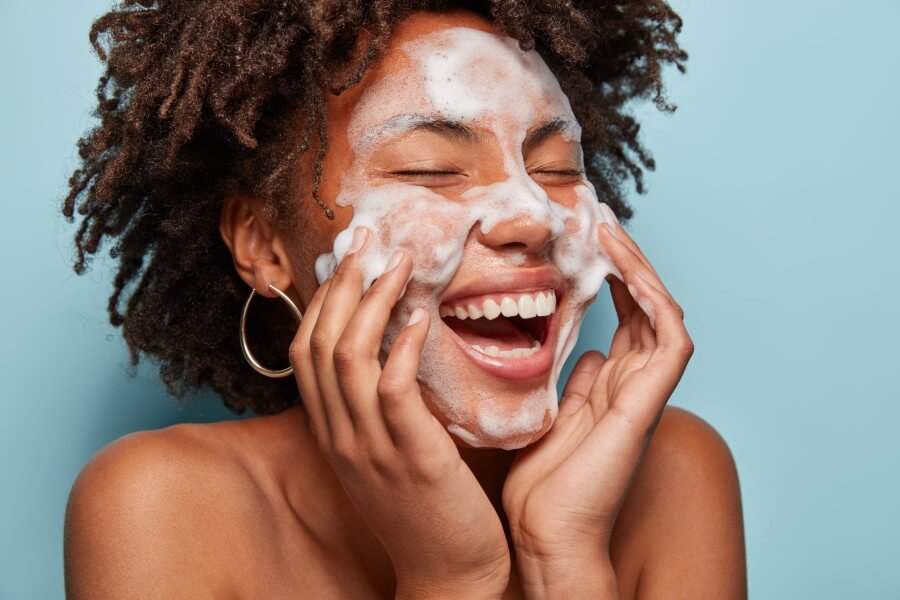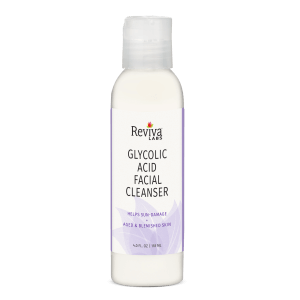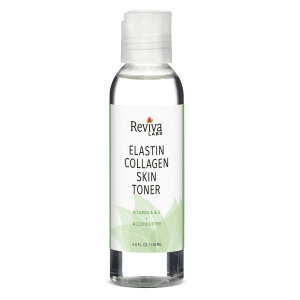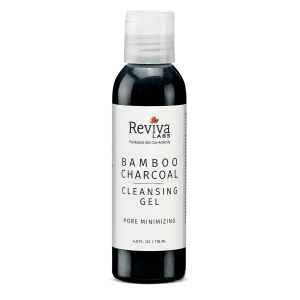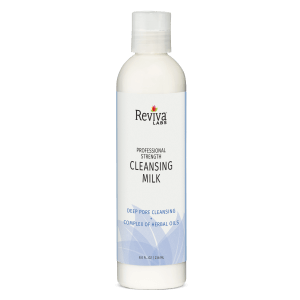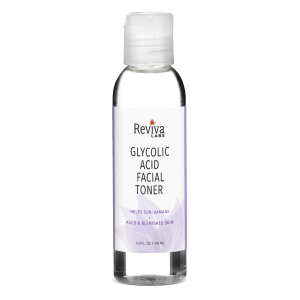Ingredients, Natural, Reviva Labs, Skin Care
Unveiling the Power of Skincare Ingredients: A Comprehensive Guide to Cleansers and Toners
Skincare can often feel like an intricate puzzle, with various pieces contributing to the overall picture of radiant and healthy skin. Understanding the roles of different skincare ingredients and how they function in your regimen is vital to unlock your skin’s full potential. This comprehensive guide will navigate you through the maze of skincare ingredients, focusing primarily on the building blocks of any skincare routine – cleansers and toners.
The Backbone of Skincare: Understanding Cleansers and Toners
Before diving into the individual ingredients, it’s crucial to grasp the fundamental roles of cleansers and toners in your skincare routine.
Cleansers: Your Skincare Starting Point
A cleanser is your first step towards achieving clean, healthy skin. It helps in removing dirt, oil, and makeup from your skin’s surface, paving the way for the subsequent skincare products to perform more effectively. Depending on your skin type and concerns, you might need to opt for specific cleansers with targeted ingredients.
Toners: The Bridge Between Cleansing and Moisturizing
Toners serve as a bridge connecting the cleansing and moisturizing steps of your skincare routine. Acting as a second line of defense after your cleanser, toners help remove any residual makeup or dirt. They also balance your skin’s pH levels and prep your skin to absorb the following skincare products more efficiently.
Having set the stage with the roles of cleansers and toners, let’s delve into the world of skincare ingredients that make these products tick and treat various skin concerns.

Popular Skincare Ingredients to Look For
The skincare industry is teeming with an array of ingredients, each boasting unique properties and benefits. Here, we spotlight some of the most common and effective ingredients you can find in your cleansers and toners.
Alpha-hydroxy Acids (AHA)
Commonly found in over-the-counter skincare products, Alpha-hydroxy acids (AHAs) such as glycolic, lactic, tartaric, and citric acids have gained popularity for their skin rejuvenating properties. AHAs in your cleanser or toner can combat fine lines, wrinkles, irregular pigmentation, and age spots, while also reducing pore size. However, they can increase sun sensitivity, so using an SPF in the daytime is crucial.
Glycolic Acid and Lactic Acid
Glycolic acid, an AHA, is lauded for its exfoliating abilities and collagen-boosting properties. It helps clear your pores, smooth fine wrinkles, and hydrate your skin. On the other hand, lactic acid, also an AHA, is produced in muscle cells and red blood cells. It aids in exfoliation and moisturization, making it a common ingredient in foot peels and other hydrating products.
Beta Hydroxy Acids (Salicylic Acid)
Salicylic acid, a well-known beta hydroxy acid (BHA), plays a significant role in improving the texture and color of sun-damaged skin. It removes dead skin cells and penetrates oil-laden hair follicle openings, making it a common ingredient in products designed to tackle acne. Interestingly, salicylic acid can often be less irritating than AHAs, providing similar improvements in skin texture and color.
Hydroquinone
Hydroquinone-containing skincare products are often termed as bleaching creams or lightening agents. These products aim to lighten hyperpigmentation, such as age spots and dark spots related to pregnancy or hormone therapy. If you’re allergic to hydroquinone, products containing kojic acid may be a beneficial alternative.
Kojic Acid
Discovered in 1989, kojic acid is a remedy for pigment problems and age spots. It works similarly to hydroquinone and is derived from a fungus. Studies have shown that this ingredient can be effective as a lightening agent, slowing the production of melanin (brown pigment).
Retinol
Retinol, derived from vitamin A, is a powerhouse ingredient for improving acne, acne scarring, mottled pigmentation, fine lines and wrinkles, skin texture, skin tone, and color, and your skin’s hydration levels. It’s found in many over-the-counter anti-aging skincare products.
L-ascorbic Acid (Vitamin C)
L-ascorbic acid, the only form of vitamin C you should look for in your skincare products, can stimulate the synthesis of collagen, thereby minimizing fine lines, scars, and wrinkles. It can also improve the appearance of sun-damaged skin.
Hyaluronic Acid
Often used with vitamin C products, Hyaluronic acid is known for its ability to reverse or stop aging. This substance, found abundantly in young skin, other tissues, and joint fluid, can enhance the skin’s ability to retain moisture.
Niacinamide (Vitamin B3)
Niacinamide is a form of vitamin B3 that helps build keratin and keep your skin firm and healthy. It can help retain moisture and stop skin flushing. If you have rosacea, face masks with this ingredient can help reduce redness and swelling.
Dimethicone
This silicone-based ingredient can help repair dry or cracked skin and is the second-most common ingredient in moisturizers. It also protects your hair against breakage and creates a slick, smooth feeling in your follicles.
Copper Peptide
Copper peptide, often referred to as the most effective skin regeneration product, promotes collagen and elastin production, acts as an antioxidant, and promotes the production of glycosaminoglycans like hyaluronic acid.
Glycerin
This natural moisturizing ingredient helps repair dry or cracked skin. It is a great ingredient for oily skin that can help reduce blackheads, pimples, and acne.
Having familiarized ourselves with some common skincare ingredients, let’s delve deeper into the ingredients you should look for specifically in acne facial cleansers and toners.
Key Ingredients for Acne Facial Cleansers and Toners
Managing acne-prone skin can be quite challenging. However, knowing which ingredients to look for in your acne facial cleansers can make a significant difference. Here, we uncover the key ingredients you should seek out in acne facial cleansers:
Salicylic Acid, Benzoyl Peroxide, and Glycolic Acid
Salicylic acid, benzoyl peroxide, and glycolic acid are powerful ingredients that can penetrate pores to treat blackheads. They help unblock and unclog pores filled with dead cells, makeup, oil, germs, dirt, and debris, giving your pores a refined appearance.
Benzoyl peroxide is particularly effective at treating P. acnes, the bacteria that cause red acne pimples and pustules. On the other hand, salicylic acid can clean oily pores, allowing other ingredients to penetrate better, while glycolic acid can lighten skin hyperpigmentation from old acne lesions and acne scars.
The Art of Skincare Mixology
While knowing the right ingredients is essential, understanding how to mix and match these ingredients for your specific skin concerns is equally critical. Here’s a quick guide on the dos and don’ts of mixing common skincare ingredients:
Mixing Retinol
Retinol is an effective anti-aging ingredient but can exacerbate skin dryness. Therefore, it’s crucial to mix retinol with hydrating ingredients like hyaluronic acid, ceramides, and SPF. However, retinol should not be mixed with vitamin C, benzoyl peroxide, and AHA/BHA acids.
Mixing Vitamin C
Vitamin C is best used with antioxidants and SPF. However, it should not be mixed with retinol as they have different functions and are best used at different times of the day.
Mixing AHA/BHA Acids
AHA/BHA acids should be mixed with moisturizing ingredients and SPF. However, they should not typically be used together with retinoids on the same day to avoid skin irritation.
Mixing Benzoyl Peroxide
Benzoyl Peroxide should be mixed with gentle hydrating ingredients, SPF, and topical antibiotics. However, it should not be mixed with retinol.
Mixing Niacinamide
Niacinamide, or vitamin B3, can be mixed with almost every ingredient in your skincare routine. However, it should not be used one right after the other with vitamin C.
Mixing SPF
SPF can be used in any skincare routine and should be mixed with all skincare ingredients. However, it should not be mixed with makeup or moisturizers.
Wrapping Up
Understanding the skincare ingredients in your cleansers and toners can empower you to make informed choices for your skincare routine. Remember, the right mix of ingredients depends heavily on your specific skin type and concerns. Always listen to your skin and adjust your skincare routine accordingly. The journey to radiant, healthy skin is a marathon, not a sprint, so be patient and enjoy the process. Happy skincare journey!



